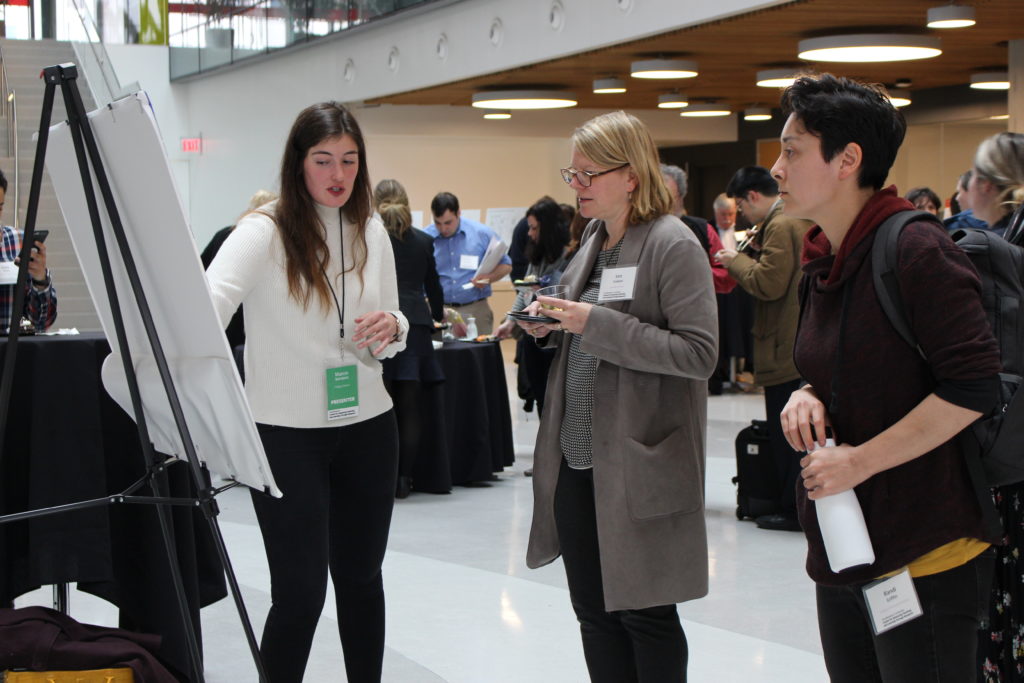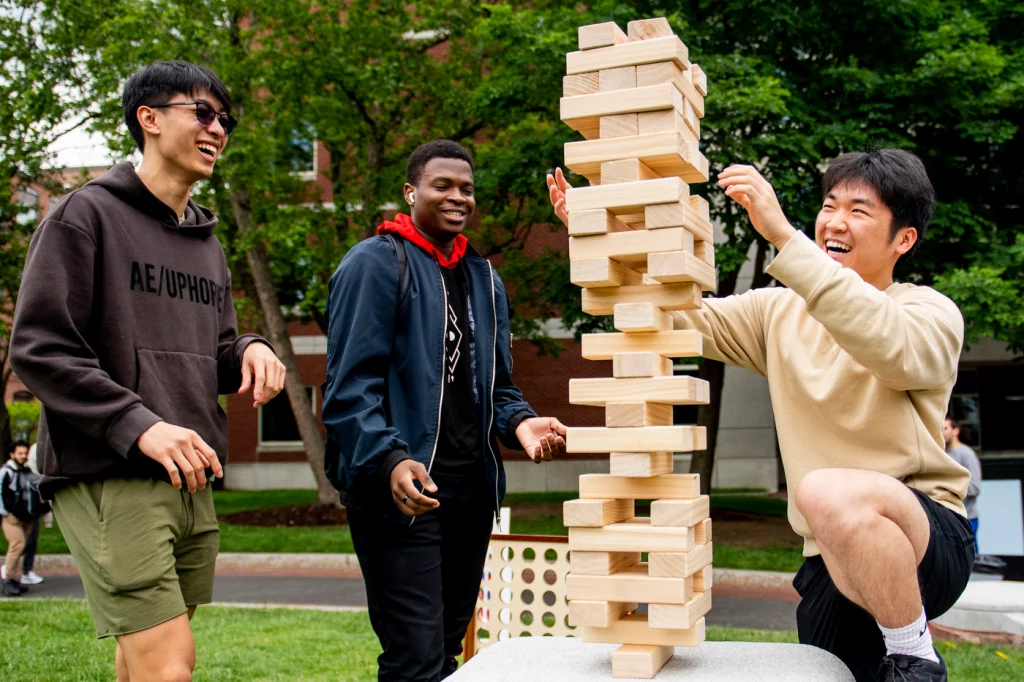Making the Large Class Active and Inclusive
Though many of us have experienced a lecture as the default large class experience, it can actually be an ideal setting to get students to be very active, allowing them to benefit from diversity, and even advance equity in the learning experience (Ake-Little, von der Embse, & Dawson, 2020; Lyons & Young, 2021). This is particularly true if you leverage the learning that can happen between students and class meetings (Flaherty, 2020, June 18).
1. Move the experience from anonymous to individualized

To feel included, we all must feel our individuality is acknowledged and honored.
- Start with your own story. As a leader, breaking down anonymity begins with you modeling the kind of sharing you want to invite your students into (Dickrell, 2019). Some faculty even like to encourage safety and risk taking in their students by sharing their own “failure resume.”
- Get to know your students using a simple early-semester survey. Some educators have students identify themselves so they can get to know the individual, while some offer an anonymous survey in which students can just share “what I wish my instructor knew” (Jungic, 2019). After collecting this information, it can be helpful to reflect back to the class–in an appropriately aggregated/non-identifying way–what you learned, so they can feel you do see and hear them based upon what they told you.
- Offer extra credit if students visit your office hours in the first three weeks. This gives students a chance to find your office (if your office hours are in-person) and for you to get to know each other while the stakes are still low, making the interaction more comfortable (adapted from Jungic, 2019).
- When students speak in a large class, ask them to say their name and refer back to them by name. This creates the experience of your class being “a place where names are known and used,” which has a powerful warming effect on the social atmosphere (e.g, Vohs, J., 1992; Sandel cited in Stachowiak, 2019).
- Explore Academic Technologies’ tech tips on moving the experience from anonymous to individualized:
Clearly, these suggestions range in terms of the amount of time and effort needed to implement them, but they all attempt to counter the common experience of anonymity in a large class.

I love trying to find ways to make my large classes interactive and engaging for students. When I invite participation, students sit a little taller, their eyes come into focus and sparkle. This is when they learn.
2. Move the engagement from passive to active
To understand, retain, and apply new knowledge, we must do more than hear about them–we must actively practice using those ideas.
- Experiment with various question-and-answer techniques. These quick activities can not only help you check for understanding, but also stimulate students’ deeper thinking.
- Consider what kind of learning artifacts students can create in class. Whether they work alone, together, or interactively with you, there are several “outputs” that can generate powerful learning in their creation.
- Harness the power of learning in groups. Even in classes with 350+ students, group work can be well-organized and productive–not only getting students active in their learning, but creating meaningful relationships for them along the way. Collaboration with peers may be especially helpful for students from historically marginalized groups whose outcomes have been shown to improve when they receive support from others with whom they identify (Ake-Little et al., 2020).
- Recognize that active learning strategies in large classes may increase anxiety and interfere with learning for students who fear negative evaluation; and modify your implementation to reduce anxiety (Cooper, Downing, and Brownell, 2018). For example, some educators switch from “cold-calling” to “warm-calling” in order to give students time to fully participate.
- Leverage the power of experiential learning. For example, Spencer employs interrupted case studies, service learning projects, and “embodied” experience of concepts while, Wesch offers “challenges” that are relevant to learners’ lives (Stachowiak, 2019, August 28).
- Explore Academic Technologies’ tech tips on moving engagement from passive to active:
Any of these active learning strategies–or several of them together–can help ensure that learners achieve the learning objectives for a course, regardless of class size.


My Introductory Biology course targets metacognitive skills in parallel with course concepts. Values reflections, team-based learning, exam wrappers, and other active learning strategies promote inclusivity and a welcoming learning space.
3. Move the communication from one-way to multi-directional

As educators, we care deeply about our material and want to give as much of it as we can to our students. This can lead to feeling a tremendous sense of personal responsibility to “cover” a great deal of material through delivering a lecture, making the bulk of the classroom experience a one-way flow of information. In fact, students can contribute a great deal to the learning experience. Information about how the course is going and what it needs can be useful feedback for the instructor.
- Consider low-stakes assessment activities like “two-stage exams” in which students must explain course material to one another in order to come to a consensus.
- Collaborating with students on regular feedback from your class can keep you all learning together. Students can even help you develop your curriculum (Dickrell, 2019).
- Explore Academic Technologies’ tech tips on moving communication from one-way to multi-directional.
References
Ake-Little, E., von der Embse, N., & Dawson, D. (2020). Does class size matter in the university setting? Educational Researcher, 49(8), 595–605.
Cooper, K.M., Downing, V.R., & Brownell, S.E. (2018). The influence of active learning practices on student anxiety in large-enrollment college science classrooms. International Journal of STEM Education, 5(23).
Dickrell, P. (2019). Large STEM courses: Education by engagement. In J. Golding, C. Rawn, and K. Kern (Eds.), Strategies for teaching large classes effectively in higher education (pp. 35-49). Cognella, Inc.
Jungic, V. (2019). Students and instructors in large classes: Building dialogue and mutual trust. In J. Golding, C. Rawn, and K. Kern (Eds.), Strategies for teaching large classes effectively in higher education (pp. 65-79). Cognella, Inc.
Lyons, C.W. & Young, J.T. (2021). Student-centered teaching for equity and inclusion in very large multidisciplinary classes. In R. Kumar & B. Rafaei (Eds.), Equity and inclusion in higher education: Strategies for teaching (pp. 31-37). University of Cincinnati Press.
Stachowiak, B. (2019, August 29). How to engage students and support learning in large classes. EdSurge.
Vohs, J. (1992). Personal communication. University of California Davis.
